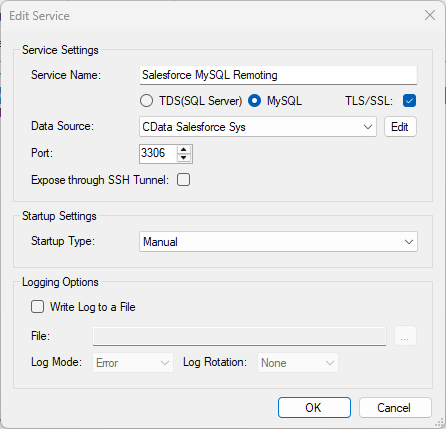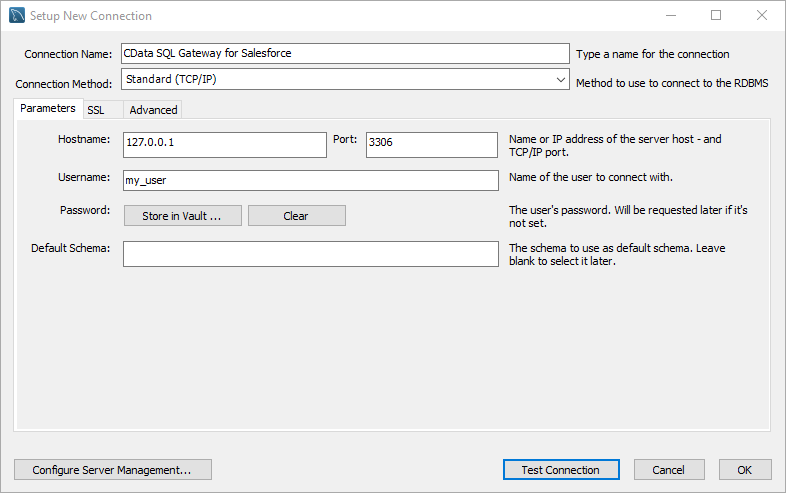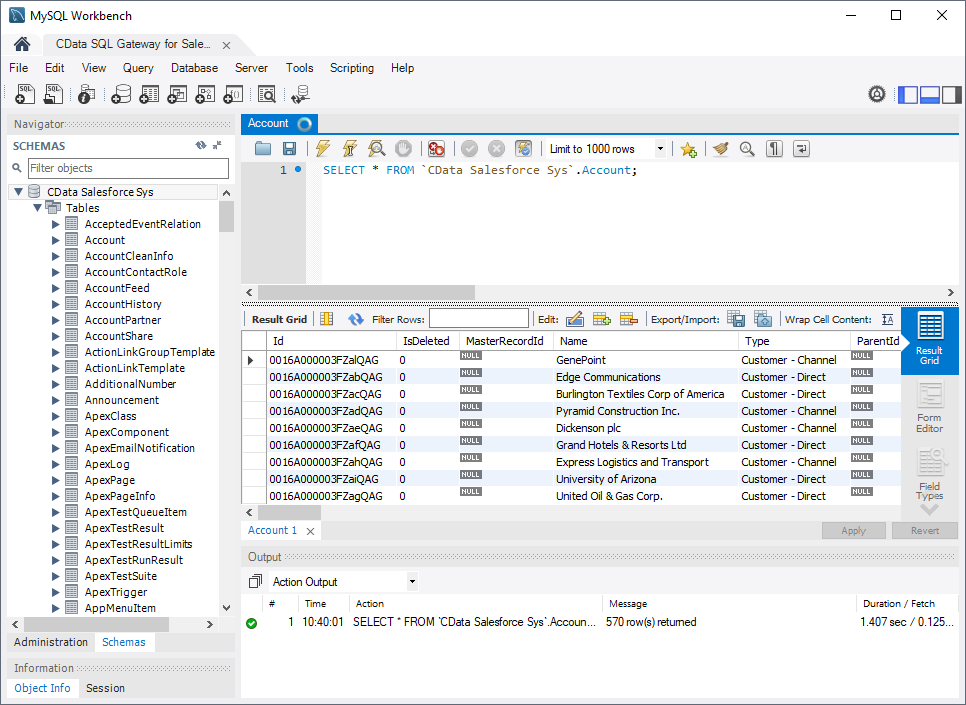Discover how a bimodal integration strategy can address the major data management challenges facing your organization today.
Get the Report →How to Query Okta Data in MySQL Workbench
Execute MySQL queries against live Okta data from MySQL Workbench.
You can use the SQL Gateway from the ODBC Driver for Okta to query Okta data through a MySQL interface. Follow the procedure below to start the MySQL remoting service of the SQL Gateway and work with live Okta data in MySQL Workbench.
Connect to Okta Data
If you have not already done so, provide values for the required connection properties in the data source name (DSN). You can use the built-in Microsoft ODBC Data Source Administrator to configure the DSN. This is also the last step of the driver installation. See the "Getting Started" chapter in the help documentation for a guide to using the Microsoft ODBC Data Source Administrator to create and configure a DSN.
To connect to Okta, set the Domain connection string property to your Okta domain.
You will use OAuth to authenticate with Okta, so you need to create a custom OAuth application.
Creating a Custom OAuth Application
From your Okta account:
- Sign in to your Okta developer edition organization with your administrator account.
- In the Admin Console, go to Applications > Applications.
- Click Create App Integration.
- For the Sign-in method, select OIDC - OpenID Connect.
- For Application type, choose Web Application.
- Enter a name for your custom application.
- Set the Grant Type to Authorization Code. If you want the token to be automatically refreshed, also check Refresh Token.
- Set the callback URL:
- For desktop applications and headless machines, use http://localhost:33333 or another port number of your choice. The URI you set here becomes the CallbackURL property.
- For web applications, set the callback URL to a trusted redirect URL. This URL is the web location the user returns to with the token that verifies that your application has been granted access.
- In the Assignments section, either select Limit access to selected groups and add a group, or skip group assignment for now.
- Save the OAuth application.
- The application's Client Id and Client Secret are displayed on the application's General tab. Record these for future use. You will use the Client Id to set the OAuthClientId and the Client Secret to set the OAuthClientSecret.
- Check the Assignments tab to confirm that all users who must access the application are assigned to the application.
- On the Okta API Scopes tab, select the scopes you wish to grant to the OAuth application. These scopes determine the data that the app has permission to read, so a scope for a particular view must be granted for the driver to have permission to query that view. To confirm the scopes required for each view, see the view-specific pages in Data Model < Views in the Help documentation.
Configure the SQL Gateway
See the SQL Gateway Overview to set up connectivity to Okta data as a virtual MySQL database. You will configure a MySQL remoting service that listens for MySQL requests from clients. The service can be configured in the SQL Gateway UI.

Query Okta from MySQL Workbench
The steps below outline connecting to the virtual Okta database created in the SQL Gateway from MySQL Workbench and issuing basic queries to work with live Okta data.
Connect to Okta through the SQL Gateway
- In MySQL Workbench, click to add a new MySQL connection.
- Name the connection (CData SQL Gateway for Okta).
- Set the Hostname, Port, and Username parameters to connect to the SQL Gateway.
- Click Store in Vault to set and store the password.
- Click Test Connection to ensure the connection is configured properly and click OK.
NOTE: When we refer to Username and Password, we mean the credentials for the user(s) created for the SQL Gateway.

Query Okta Data
- Open the connection you just created (CData SQL Gateway for Okta).
- Click File -> New Query Tab.
- Write a SQL query to retrieve Okta data, like SELECT * FROM `CData Okta Sys`.Users;

With access to live Okta data from MySQL Workbench, you can easily query and update Okta, just like you would a MySQL database. Get started now with a free, 30-day trial of the CData ODBC Driver for Okta and the CData SQL Gateway.





